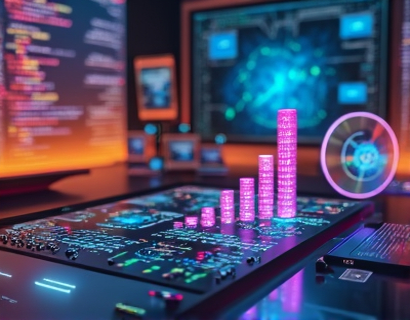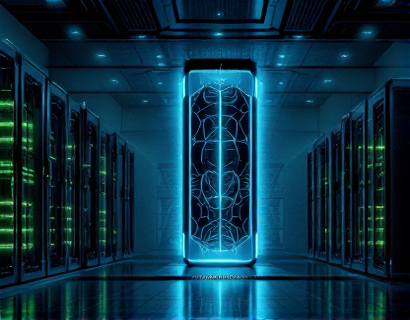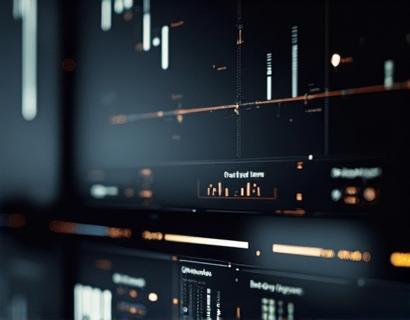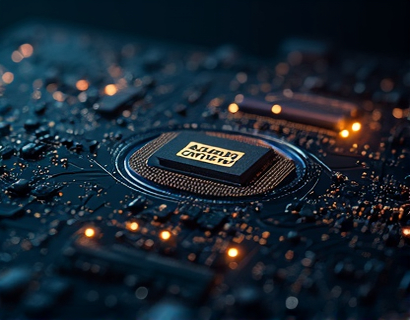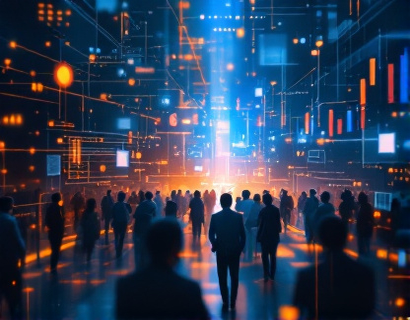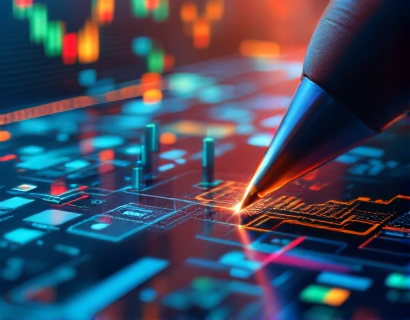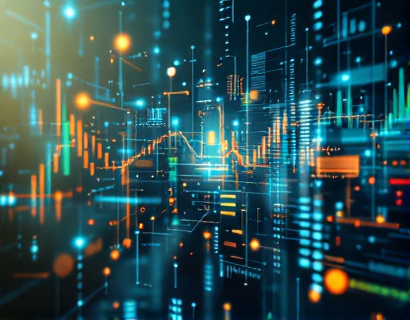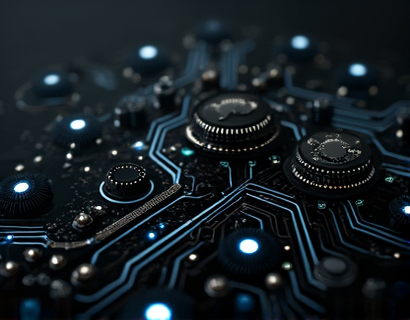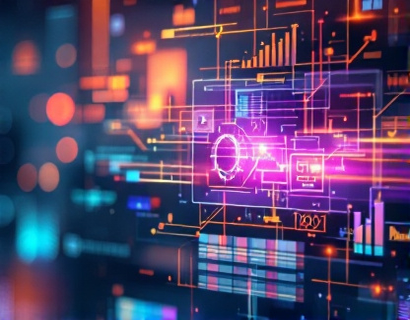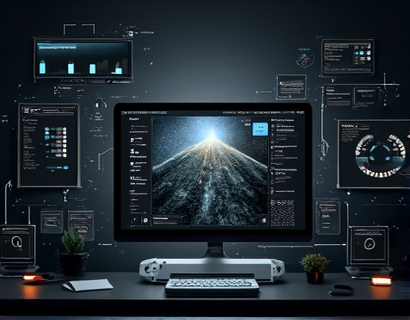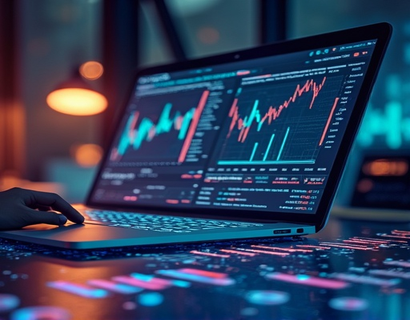Decentralized Transformation: Harnessing AI and Crypto for Next-Gen Digital Innovation in the Ucosystem
The digital landscape is undergoing a profound transformation, driven by the convergent powers of artificial intelligence (AI) and cryptocurrency. This synergy is giving rise to a new era of decentralized applications and intelligent systems, fundamentally reshaping how we interact with digital solutions. The integration of AI and crypto is not just a technological advancement but a paradigm shift that promises to enhance user engagement, security, and efficiency across various sectors. This article delves into the transformative potential of this union, exploring how decentralized applications (dApps) and AI-driven services are redefining the future of the digital ecosystem.
The concept of decentralization has been a cornerstone of the blockchain revolution, offering a alternative to centralized systems by distributing control and data across a network of nodes. When combined with AI, decentralization gains a powerful tool for creating intelligent, autonomous, and resilient systems. AI's ability to process vast amounts of data, learn from patterns, and make decisions without human intervention complements the transparency, security, and decentralization offered by blockchain technology. Together, they form a potent combination that can address some of the most pressing challenges in the digital world.
Enhancing Security and Trust
One of the most significant benefits of integrating AI and crypto is the enhancement of security and trust in digital transactions. Blockchain's inherent security features, such as immutability and cryptographic hashing, ensure that data cannot be altered once recorded. AI can further bolster these security measures by detecting and mitigating potential threats in real-time. Machine learning algorithms can analyze patterns and identify anomalies, predicting and preventing fraudulent activities before they occur. This synergy creates a robust security framework that instills confidence in users, encouraging broader adoption of decentralized applications.
Moreover, AI can improve the user authentication process through biometric verification and behavioral analysis. By leveraging AI-driven identity management, decentralized systems can offer seamless and secure access to services, eliminating the need for cumbersome passwords and traditional authentication methods. This not only enhances security but also improves the user experience, making decentralized applications more accessible and user-friendly.
Optimizing Efficiency and Automation
AI and crypto together can significantly optimize efficiency in various processes. Smart contracts, a key feature of blockchain technology, can be enhanced with AI to automate complex tasks and workflows. AI algorithms can analyze data, make decisions, and execute actions within smart contracts, reducing the need for intermediaries and manual intervention. This automation leads to faster, more reliable, and cost-effective operations, which is particularly beneficial in industries such as finance, supply chain, and healthcare.
For instance, in the financial sector, AI-driven smart contracts can facilitate automated trading, risk management, and compliance checks. These contracts can adapt to changing market conditions and regulatory requirements, ensuring that transactions are executed efficiently and in accordance with the latest rules. In supply chain management, AI can optimize inventory levels, predict demand, and streamline logistics, while blockchain ensures transparency and traceability of goods. The combination of AI and crypto in these processes results in a more streamlined and efficient ecosystem.
Personalization and User Engagement
The integration of AI and crypto also revolutionizes user engagement by enabling highly personalized experiences. AI algorithms can analyze user behavior, preferences, and interactions to deliver tailored content and services. In the context of decentralized applications, this personalization can be enhanced by leveraging blockchain's transparency and user control. Users have greater autonomy over their data, choosing what information to share and how it is used, while AI ensures that the experience remains relevant and engaging.
For example, in decentralized social media platforms, AI can curate content based on user interests and preferences, creating a more engaging and relevant feed. At the same time, blockchain ensures that user data is secure and that users retain ownership of their content. This combination fosters a more interactive and loyal user base, as individuals feel more in control of their digital experiences.
Innovative Business Models
The convergence of AI and crypto is giving birth to innovative business models that disrupt traditional industries. Decentralized finance (DeFi) is a prime example, where AI-enhanced smart contracts and blockchain-based protocols are redefining lending, borrowing, and trading. AI can analyze market data and user behavior to optimize lending rates, assess credit risk, and manage portfolios, all within a transparent and trustless environment. This not only democratizes access to financial services but also increases efficiency and reduces costs.
In the realm of content creation and distribution, AI and crypto are enabling new revenue streams through tokenization and decentralized platforms. Creators can tokenize their content, allowing fans and supporters to purchase and own fractions of digital assets. AI can enhance this process by analyzing audience engagement, predicting trends, and optimizing content distribution. This model not only rewards creators more fairly but also provides a more direct and rewarding experience for consumers.
Challenges and Considerations
While the potential of AI and crypto integration is vast, there are several challenges and considerations that must be addressed. Regulatory uncertainty remains a significant hurdle, as governments and regulatory bodies are still grappling with how to oversee these decentralized and often borderless technologies. Ensuring compliance while maintaining the decentralized nature of these systems requires careful navigation and collaboration between stakeholders.
Another challenge is the technical complexity involved in developing and maintaining AI-driven decentralized applications. Developers need to possess a deep understanding of both AI and blockchain technologies to create robust and secure systems. Additionally, there is a need for standardization and interoperability to ensure that different dApps and AI systems can work seamlessly together.
Privacy concerns also play a crucial role. While blockchain offers transparency, it can also expose sensitive information. AI can help mitigate this by implementing advanced encryption and privacy-preserving techniques, but it is essential to strike a balance between transparency and user privacy.
Future Prospects
Looking ahead, the synergy between AI and crypto is poised to drive even more innovative developments in the digital ecosystem. As AI algorithms become more sophisticated, their ability to process and analyze data from decentralized sources will enhance the capabilities of dApps. Quantum computing, another emerging technology, could further accelerate these advancements by providing unprecedented computational power.
Moreover, the rise of edge computing, which processes data closer to the source, can complement decentralized systems by reducing latency and improving response times. When combined with AI and crypto, edge computing can create highly efficient and responsive networks, enabling real-time applications in areas such as IoT, autonomous vehicles, and smart cities.
The future also holds the potential for AI to play a more proactive role in governance and decision-making within decentralized networks. AI can analyze data from various sources to propose optimizations and improvements, ensuring that decentralized systems operate at their highest potential. This could lead to more adaptive and resilient networks that can evolve in response to changing conditions.
In conclusion, the integration of AI and crypto is transforming the digital landscape, offering a powerful framework for decentralized innovation. By enhancing security, optimizing efficiency, personalizing user experiences, and enabling new business models, this synergy is paving the way for a more secure, efficient, and engaging digital future. As the technology continues to evolve, the possibilities are endless, and the potential for disruption and positive change is immense.






